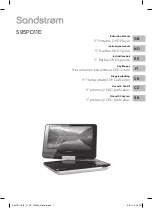
SS-OCT System Base Unit
Chapter 5: Imaging Artifacts
Rev A, December 17, 2018
Page 41
5.6.
Image Distortion by Refractive Media
OCT images display path length differences between reference arm length and sample arm length (distance
from the beam splitter to the scattering or reflecting object). These path lengths are optical path lengths,
calculated from the physical path length multiplied by the group refractive index of the sample.
Figure 55
Schematic of a Setup to Show Distorsion from Refracting Media
Figure 56
Height Shift of OCT Image Through Refractive Media
5.6.1.
The Group Refraction Index
The principle of optical coherence tomography is the detection of optical path length differences between the
two arms of an interferometer. The optical paths within these arms are defined by the mechanical path lengths
and the refractive indices of the materials.
When talking about the refractive index of an optical material, most of the time it refers to the phase velocity
index. As the name indicates, this is a factor for the velocity of the phase when travelling through the material
in relation to the vacuum speed of light. The standard abbreviation of the Phase refractive index is
n
.
The group velocity of a wave is the velocity with which the overall shape of the wave's amplitudes - known as
the modulation or envelope of the wave - propagates through space. This velocity usually is different from the
speed of the phases of the single wavelengths. This velocity is calculated by using the group refractive index
g
n
of a material.
The relation of these two values is:
0
0
d
dn
n
n
g
In OCT systems, the group refractive index defines the optical path lengths.














































